Let’s make gyeran jjim! This Korean steamed egg is so light and fluffy, it’s almost unreal! It’s a snap to make this savory, egg soufflé at home.
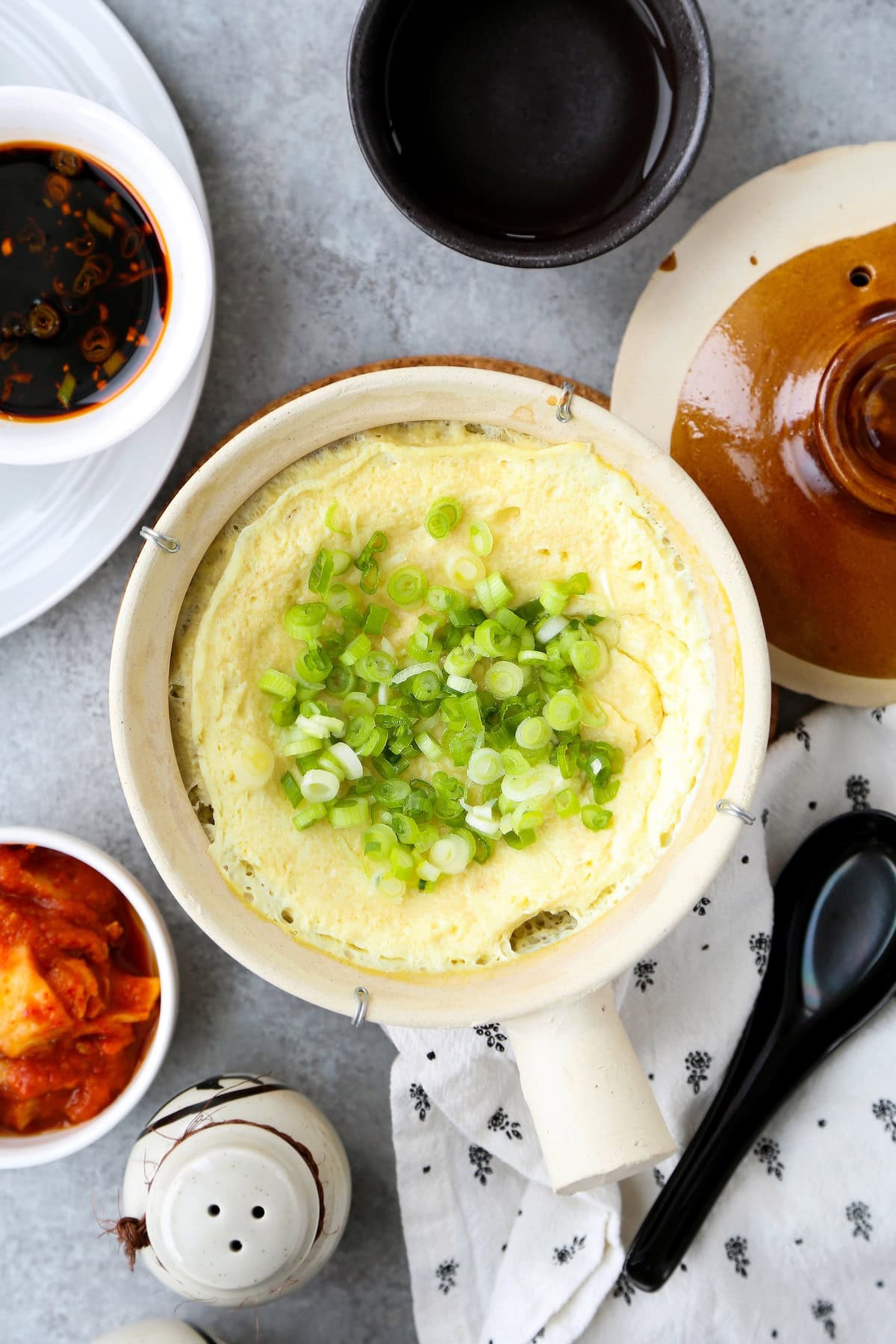
Korean food is just so great!
There’s something so satisfying about a packed table – with multiple plates running the gamut of colors. The fire engine red of kimchi and tteokbokki, to the jungle green of lettuce and perilla leaves used to wrap ssam.
However, it can be a little intimidating if it’s your first time sitting down to a Korean feast. What goes with what? Will that bubbling pot of doenjang jjigae be too spicy for me?
Hey, I get it.
Well, I’ve got an easy Korean recipe for you to try out whether you’re a first-timer or a hardcore veteran.
This Korean steamed egg is both easy to make and packed with a savory, airy fluffiness.
Let’s get to know gyeran-jjim!
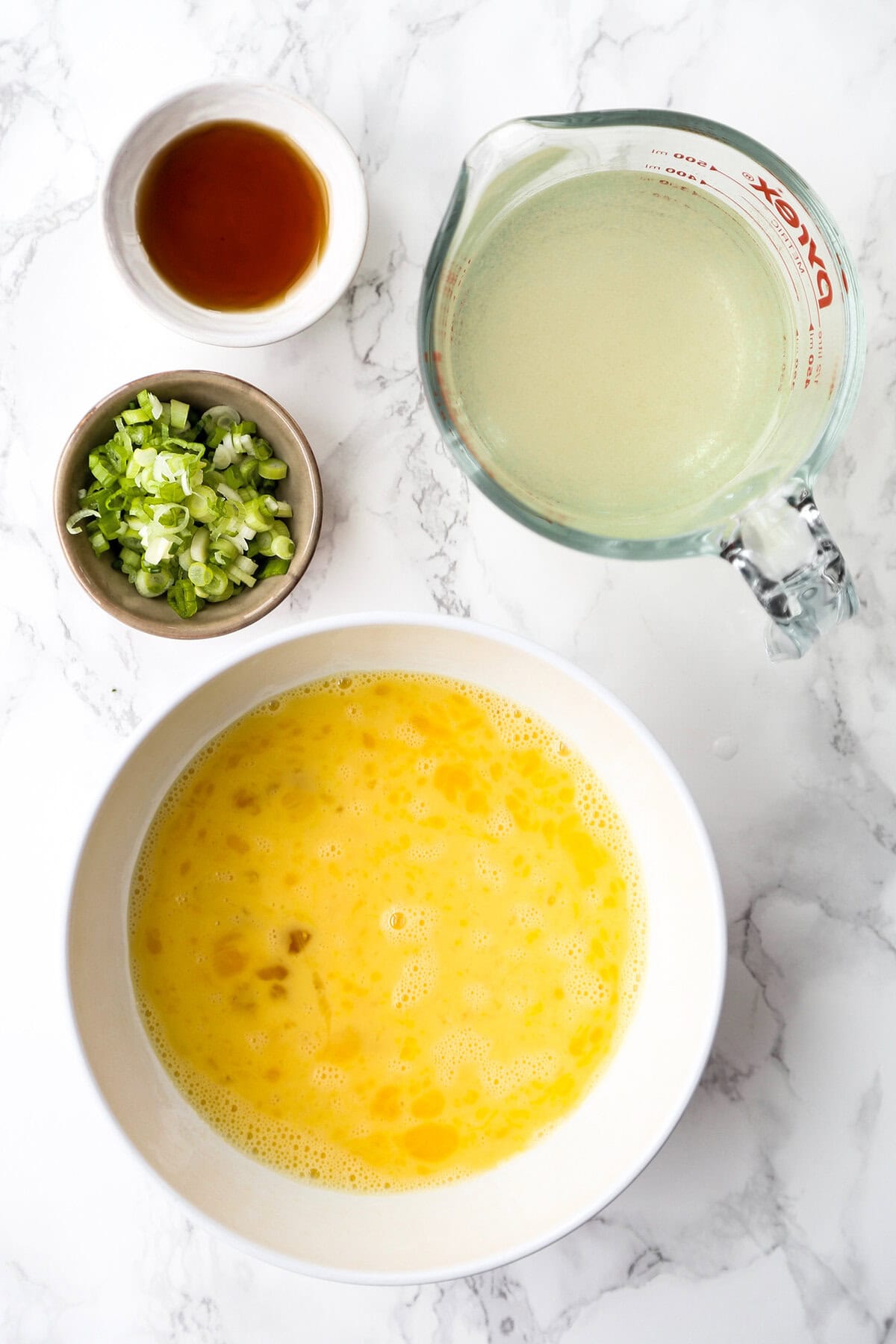
What is gyeran jjim?
Gyeran-jjim – 계란찜 – is a Korean steamed egg recipe. It is frequently served on its own with a side of white rice – or as banchan (the small side dishes served as part of a larger meal).
And while you can cook it either on the stovetop or in a steamer basket, the real standout is the savory, briny flavor profile and the light, airy texture.
Eggs are whisked with water or dashi – and either fish sauce or anchovy sauce (more on all of this in a sec). This achieves two important things:
- The liquid thins the eggs, which in turn makes them light and breezy in texture once steamed.
- Dashi and fish sauce impart a real saline and savory essence to the dish that make this steamed eggs recipe pop with flavor.
Now, it has quite a few flavor similarities to a steamed egg custard like a Japanese chawanmushi. The savory notes are most definitely parallel. However, from a texture standpoint, a Korean steamed egg is quite different.
You see, an egg custard has a silky smoothness that is not quite as present in this feathery Korean steamed egg recipe.
Therefore think of gyeran jjim almost as a Korean egg soufflé. Since there’s a fluffy, airy rise that happens when you cook it in a Korean clay pot, that seems like a more appropriate description of texture.
And you can make it at home with just a handful of ingredients!
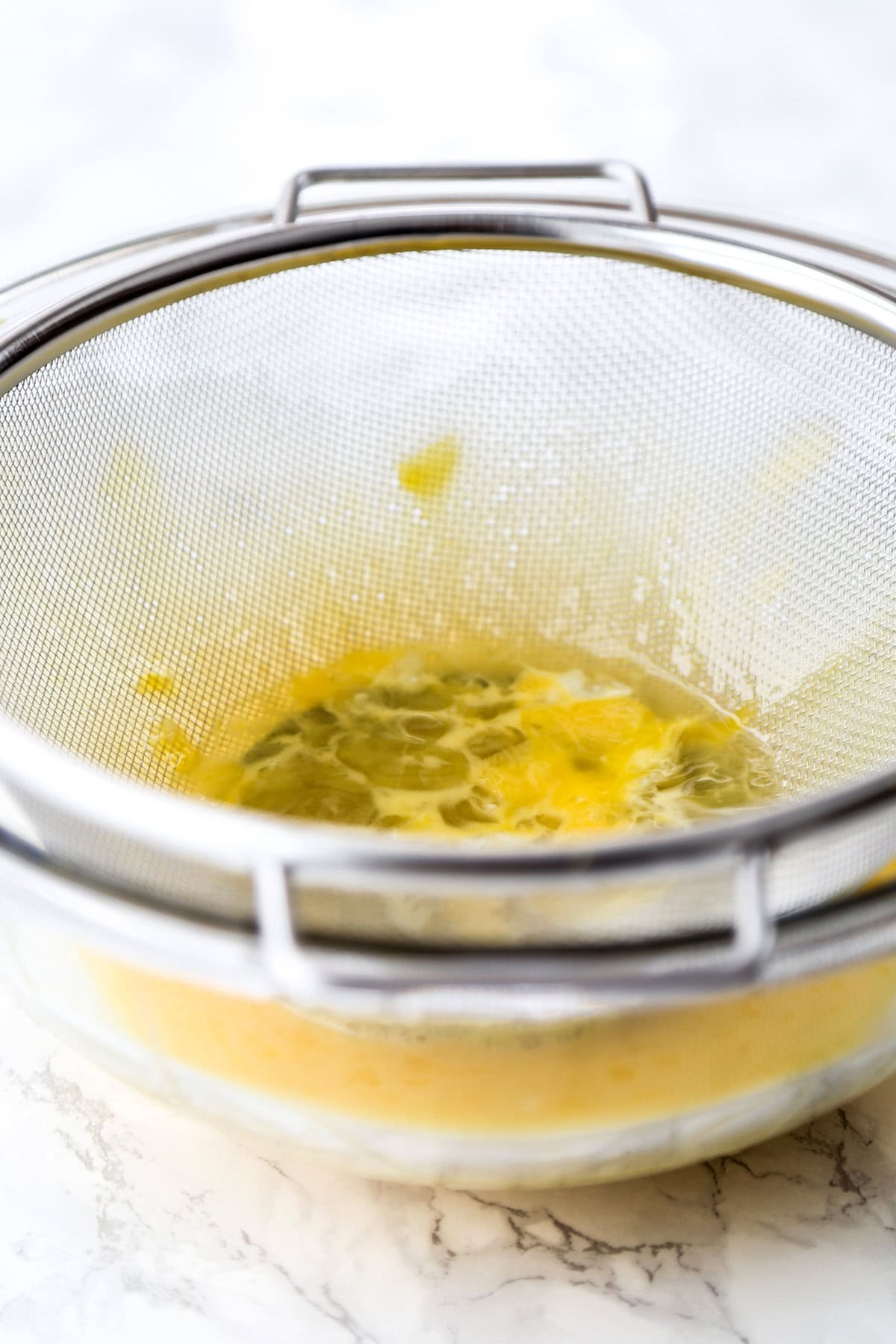
Ingredients for this Korean steamed egg recipe
- Eggs: You’ll need 7 large eggs for this Korean steamed egg recipe. Before cooking, you’ll want to whisk your eggs in a large bowl and then run the mixture through a sieve or strainer. This will get rid of the slimy bits of egg-white that didn’t mix. It leaves you with a uniform, smooth texture.
- Kombu Dashi or Regular Dashi: Dashi is the saline sea stock that provides the backbone of savory flavors in many of the Asian dishes we love. Now, it’s pretty easy to make homemade dashi if you’ve got the time and ingredients handy in your pantry. An alternative would be to pick up some powdered dashi at your local Asian grocery store and mix it with water. Kombu dashi is a vegetarian version (prepared without the usual bonito flakes) made solely with kombu (dried kelp). This can be a little tougher to track down in stores. You can always grab kombu dashi on Amazon.
- Anchovy Sauce or Fish Sauce: Korean anchovy sauce is typically used in the kimchi fermentation process – and it’s a solid choice. However, for this steamed eggs recipe, I used Thai fish sauce. Also created from anchovies, it provides an assertive hit of salty, savory goodness that buttresses the flavor of this Korean recipe. Read all about fish sauce here.
- Scallions: Chopped green onions have a sharp, vegetal bite – and provide a garden fresh contrast in flavor and texture from the otherwise savory and smooth steamed eggs. Four tablespoons should do the trick as a topping.
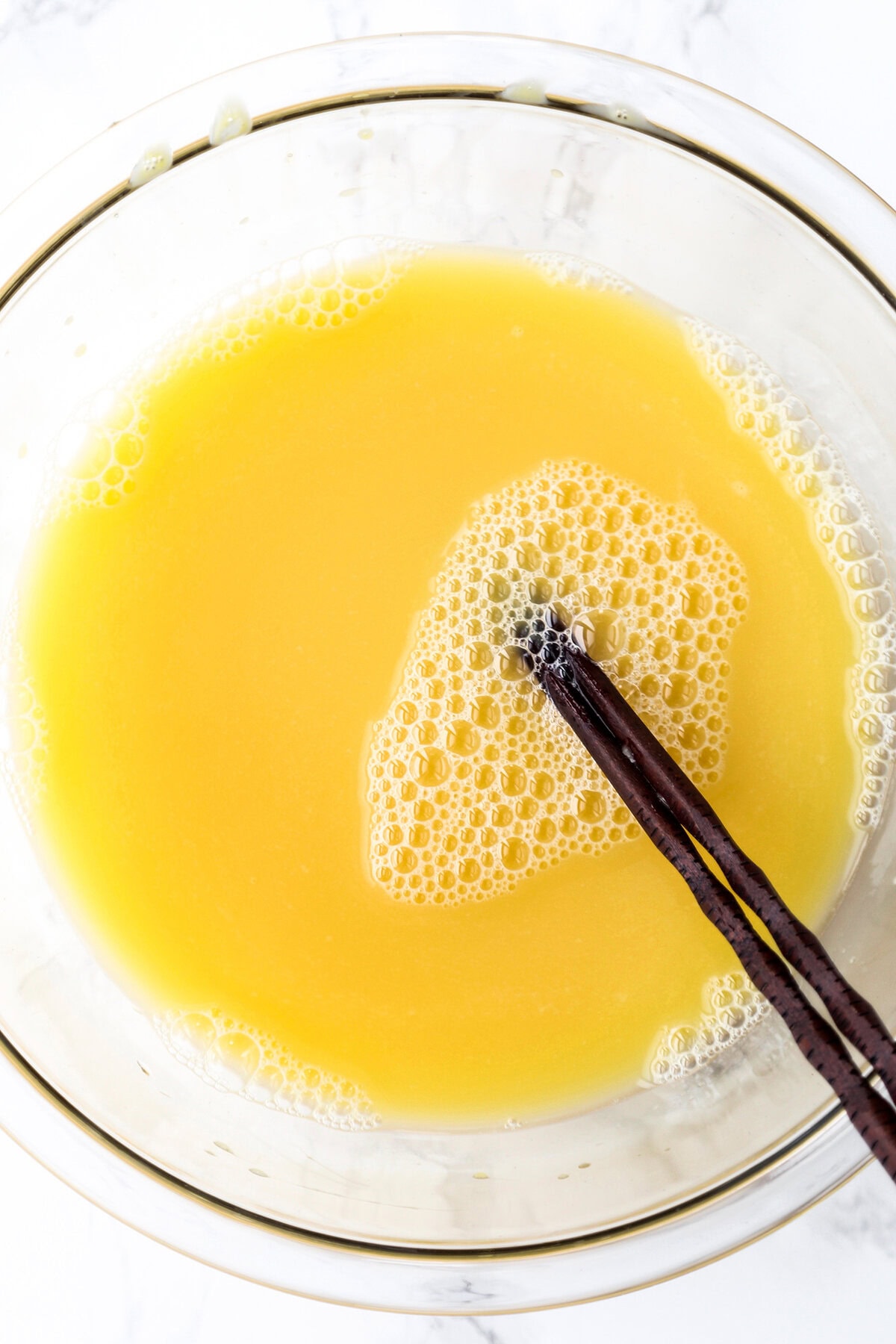
How to make Korean steamed egg
- As mentioned, you’ll want to whisk your eggs together in a bowl – and then run that mixture through a sieve to get rid of the slimy bits of unmixed egg-white.
- Then add your dashi and fish sauce (or anchovy sauce) to the eggs and mix well.
Now, you have two options when it comes to the cooking method of this Korean steamed egg recipe. And I’ll outline them below.
STOVE TOP METHOD
- Brush a Korean stone pot or clay pot with a little sesame oil – then pour in your egg mixture.
- Place your pot on the stove-top and turn the heat to medium. Cover and cook the eggs for 5 minutes. Then turn the heat to low and continue cooking for another 8-10 minutes, until the eggs are cooked.
- Top with chopped scallions and serve immediately.
STEAMING METHOD
- Divide your egg mixture evenly among 4 small heat-proof ramekins or bowls. Then place them in a steam basket or other steaming tool. You’ll want to then cover and steam your eggs for 12-15 minutes, until the eggs are cooked.
- Finally, top with chopped scallions and serve.
No matter which cooking method you choose though, you’ll love the pillowy soft texture of this Korean egg soufflé!

What to serve with Korean steamed eggs
Whether you’re having brunch with friends, or just whipping up a quick bite, eating a scallion topped Korean omelette is quite satisfying on its own accord. It goes so well with a bowl of perfectly steamed white rice.
However, this Korean steamed egg recipe really shines when served as part of a larger meal.
I love seeing a table packed with banchan (small side dishes) like sookju namul (Korean bean sprouts) – studded with larger plates of japchae, and pajeon (scallion pancakes).
This eggy wonder would also be right at home alongside an all-in-one meal like bibimbap.
You really can’t go wrong!
And if you’re looking to whip up an entire Korean feast for friends and family, check out these other delicious and easy Korean recipes:
- Tteokbokki (Dukbokki) – 떡볶이
- The Best Vegan Kimchi – 김치
- Doenjang Jjigae (Korean Soybean Paste Stew)
- Korean Cucumber Salad
- Vegan Jajangmyeon (Korean Noodles With Black Bean Sauce)
Happy cooking, friends!

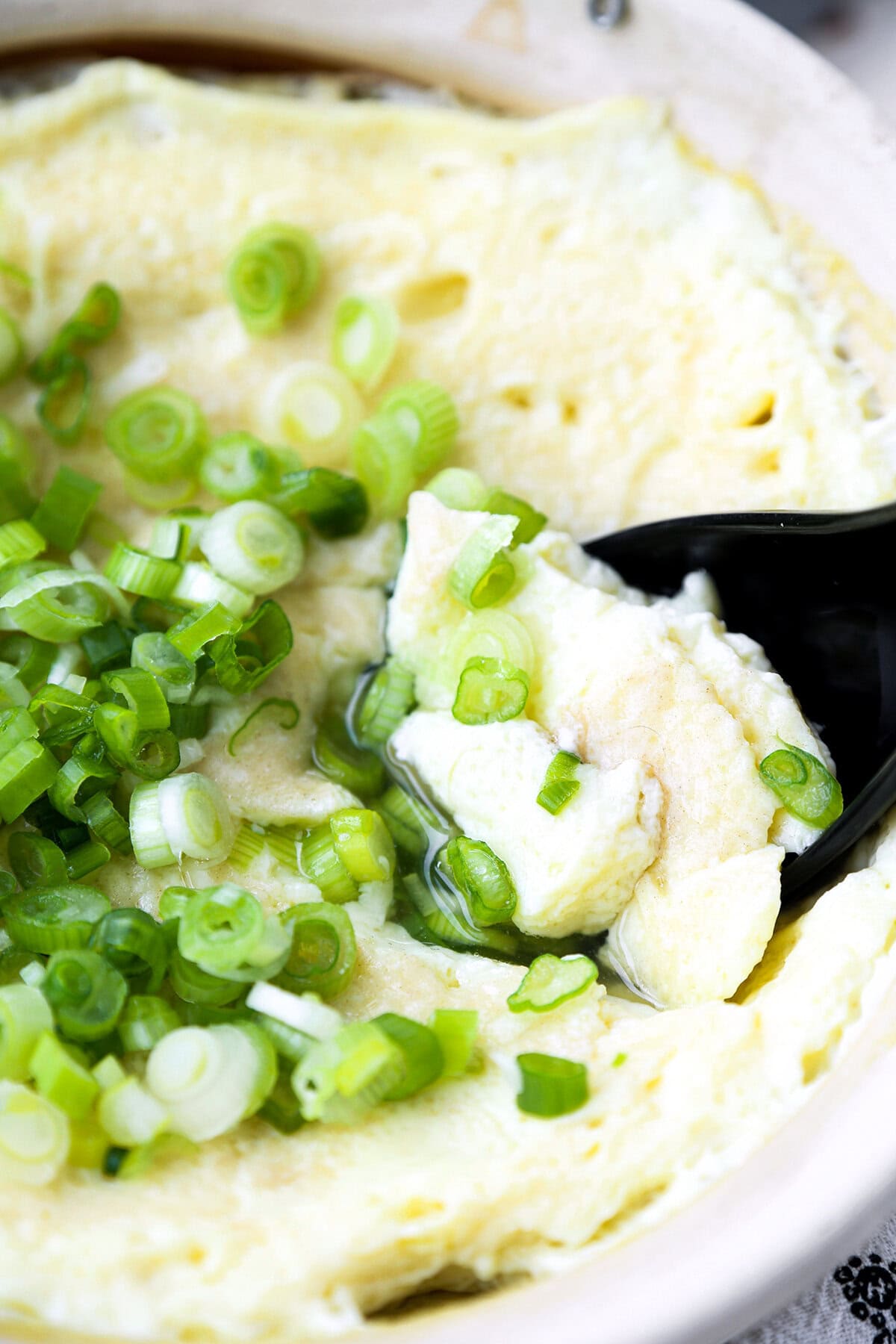
Did you like this Korean Steamed Egg Recipe? Are there changes you made that you would like to share? Share your tips and recommendations in the comments section below!
Print
Korean Steamed Egg (Gyeran Jjim)
- Prep Time: 5 minutes
- Cook Time: 15 minutes
- Total Time: 20 minutes
- Yield: 4 sides 1x
- Category: Side dish
- Method: Boiling
- Cuisine: Korean
Description
You’re going to love this savory Korean steamed egg! I have easy instructions on how to make it on the stove top – and in a steamer basket.
Ingredients
- 7 large eggs
- 1 ¾ cup kombu dashi or regular dashi
- 2 teaspoons anchovy sauce or fish sauce
- 4 tablespoons scallions, finely chopped
Instructions
- Whisk the eggs in a bowl and run the mixture through a sieve to get rid of slimy bits.
- Add the dashi and anchovy sauce to the eggs and mix well.
Stove top method
- Brush a little sesame oil in the stone pot / ceramic bowl and pour in the egg mixture.
- Place the pot on the stove and turn the heat to medium. Cover and cook for 5 minutes and turn the heat to low. Continue cooking until the eggs are cooked, about 8-10 minutes.
- Top with scallions and serve.
Steaming method
- Divide the egg mixture among 4 small heat proof ramekins or bowls and place the ramekin in a steam basket or other steaming tool. Cover and steam for 12-15 minutes, until the eggs are cooked.
- Top with scallions and serve.
Notes
Keep leftovers refrigerated in an airtight container for up to 2 days.
Nutrition
- Serving Size:
- Calories: 144
- Sugar: 0.7 g
- Sodium: 519.8 mg
- Fat: 9.2 g
- Saturated Fat: 2.9 g
- Carbohydrates: 1.1 g
- Fiber: 0.1 g
- Protein: 13.5 g
- Cholesterol: 326.5 mg














